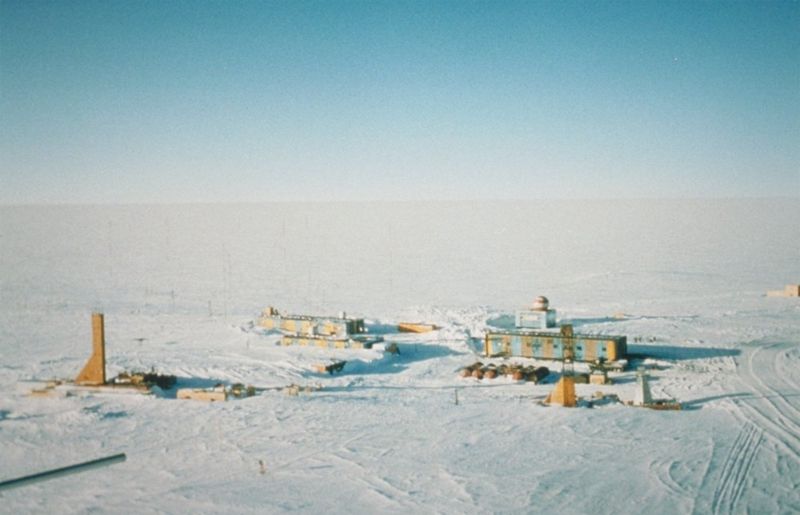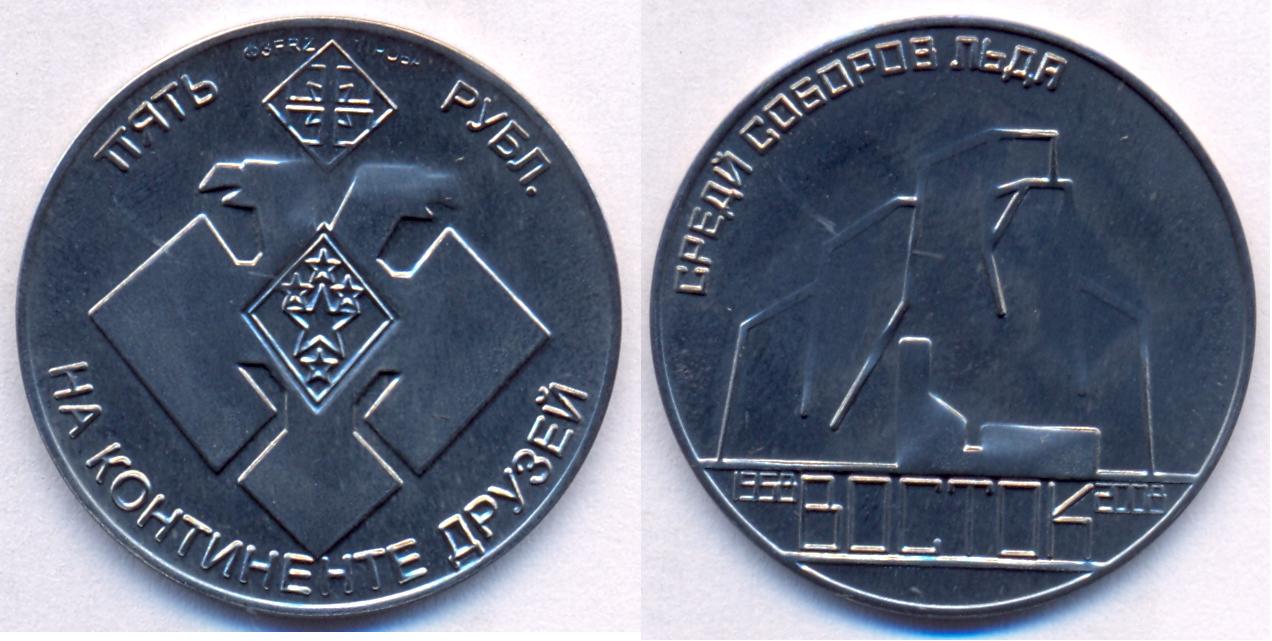 |
 |
| Vostok Station (Russia) |
| Vostok Station (Russian: Станция Восток) is a Russian (formerly Soviet) research station located near the Southern Pole of Inaccessibility, at the center of the East Antarctic Ice Sheet. Vostok Station is located within the Australian Antarctic Territory (although as a signatory to the Antarctic Treaty System, Australia does not exercise sovereignty over the territory). Vostok research station was established on December 16, 1957 (during the International Geophysical Year) by the 2nd Soviet Antarctic Expedition and has operated year-round for more than 37 years. The station was temporarily closed in January 1994. This station is now cooperatively operated by Russian, U.S., and French scientists. | |||||||||||||||||||||||||||||||||||||||||||
| In 2008, Fred Zinkann has produced coin in various metals on Vostok Antarctica Station with face value of 5 Russian Rubles to commemorate 50th years of operation 1958 to 2008: | |||||||||||||||||||||||||||||||||||||||||||
|
|
|||||||||||||||||||||||||||||||||||||||||||
| The above coin is in Molybdenum metal. "Among Cathedrals of ice // on the continent of friends". Weak strike in spots due to tough metal. | |||||||||||||||||||||||||||||||||||||||||||
|
|
|||||||||||||||||||||||||||||||||||||||||||
|
The above coin is in Zirconium metal. "Among Cathedrals of ice // on the continent of friends". |
|||||||||||||||||||||||||||||||||||||||||||
|
|||||||||||||||||||||||||||||||||||||||||||
 |
|||||||||||||||||||||||||||||||||||||||||||
| This panoramic photo of Vostok Station shows the layout of the camp. The striped building on the left is the power station while the striped building on the right is where researchers sleep and take meals. The building in the background with the red and white striped ball on top is the meteorology building. Caves were dug into the ice sheet for storage, keeping cores at an ideal -55 degrees Celsius year round. | |||||||||||||||||||||||||||||||||||||||||||
| On July 21, 1983, the lowest temperature ever recorded on earth was in Vostok with −89.2 °C (−128.6 °F). Though unconfirmed, it has been reported that Vostok reached the temperature of −91 °C (−132 °F) during the winter of 1997. In 1996, Russian and British scientists from the station discovered Lake Vostok, the largest known subglacial lake in the world, underneath Vostok Station. Lake Vostok lies some 4,000 meters (13,000 ft) below the surface of the central Antarctic ice sheet and covers an area of 14,000 km² (5,400 sq mi). The station is 3,488 meters (11,444 ft) above sea level. It is the most isolated of all of the established research stations on the Antarctic continent, located about 1,300 km from the Geographic South Pole. Its location near the South Geomagnetic Pole makes it one of the optimal places to observe changes in the Earth's magnetic sphere. Other studies include aerometeorology, actinometry, geophysics, medicine, climatology and others. The station typically contains 25 scientists and engineers in the summer, their number drops to 13 in winter. | |||||||||||||||||||||||||||||||||||||||||||
| Ice core drilling started by the Soviet Union in 1970s. These have been used to study the oxygen isotope composition of the ice. Although the Vostok core reached a depth of 3623 m the usable climatic information does not extend down this far. The very bottom of the core is ice refrozen from the waters of Lake Vostok and contains no climate information. The usual data sources give proxy information down to a depth of 3310 m or 414,000 years. | |||||||||||||||||||||||||||||||||||||||||||
| Micro-Nations | |||||||||||||||||||||||||||||||||||||||||||
| Chiefa Coins | |||||||||||||||||||||||||||||||||||||||||||

